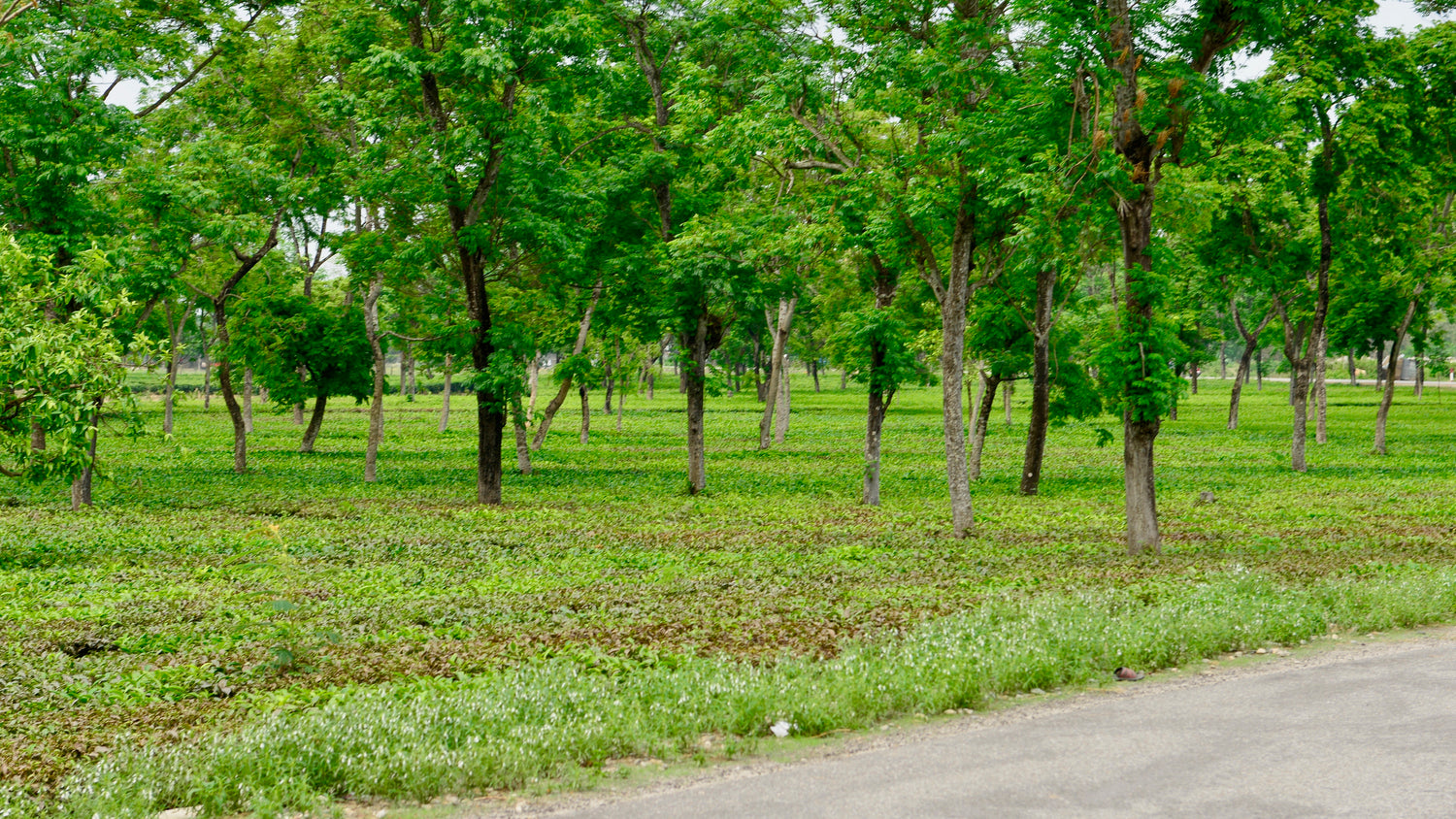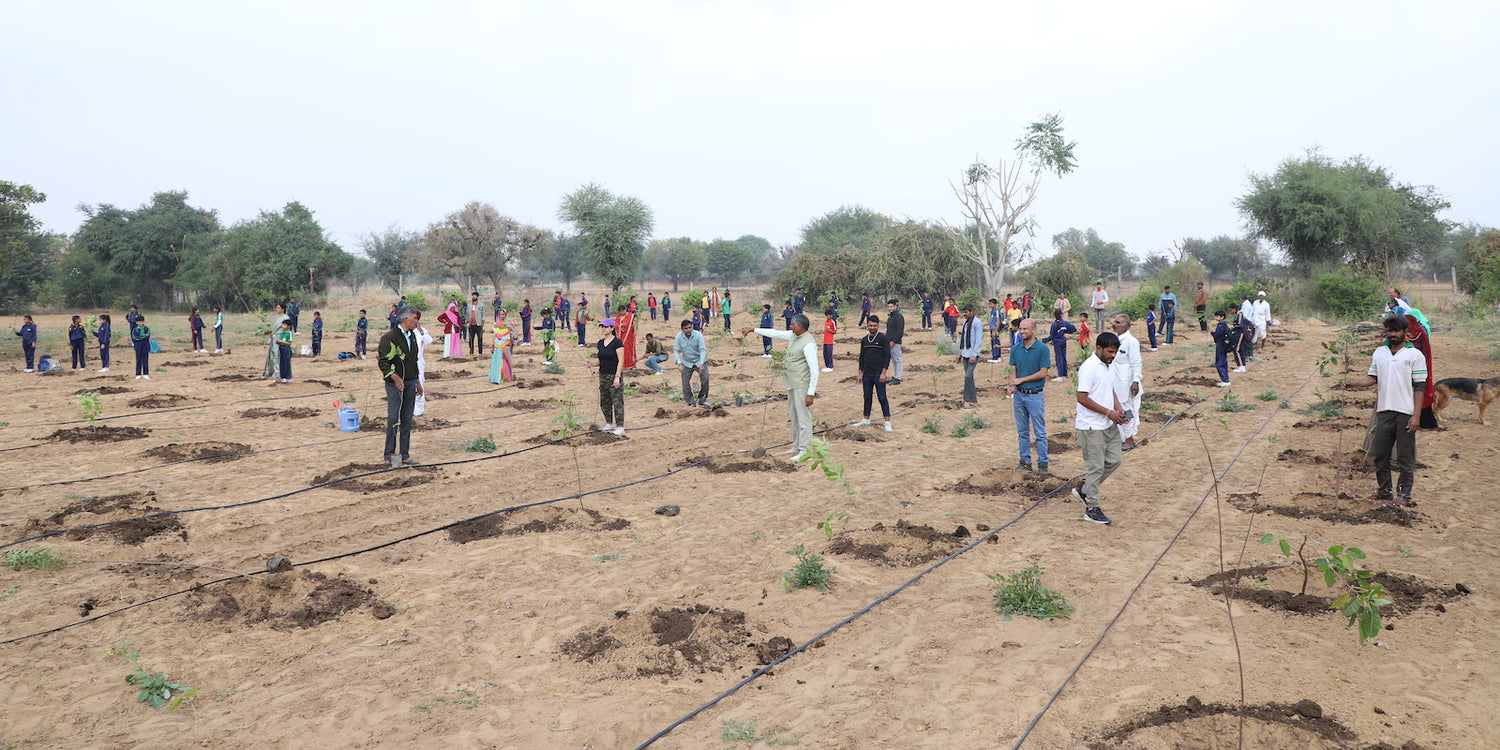Agroforestry in West Bengal: Integrating Forestry with the Deltaic Pla
West Bengal, with its fertile deltaic plains and rich biodiversity, is a land of immense agricultural and ecological significance. The state’s diverse Read more
Connect with us
-
👥 Corporates
If you are looking for:
- 🌲 Tree Plantation Events
- 📊 CSR Projects
📧 corporate@growbilliontrees.com
📞 +91 9699723523
💬 +91 9325931304 WhatsApp (Only)
🕒 Mon - Sat | 10am - 7pm IST
-
🧩 Tree Plantation NGOs
If you are looking for:
- 💰 Financial Assistance
- 🤝 Operational Support
📧 support@growbilliontrees.com
📞 +91 9699723523
💬 +91 9325931304 WhatsApp (Only)
🕒 Mon - Sat | 10am - 7pm IST
-
🌼 Individuals
If you are looking for:
- 👥 Group Tree Plantation Drive
- 🌳 Bulk Tree Plantation
📞 +91 9699723523
💬 +91 9325931304 WhatsApp (Only)
🕒 Mon - Sat | 10am - 7pm IST
Trending
Trees for Corporates
Agroforestry in West Bengal: Integrating Forestry with the Deltaic Plains
West Bengal, with its fertile deltaic plains and rich biodiversity, is a land of immense agricultural and ecological significance.
The state’s diverse landscapes, ranging from the Sundarbans mangroves to the fertile plains of the Ganges delta, offer an ideal setting for agroforestry.
By integrating trees with crops and livestock, agroforestry enhances sustainability, improves farmer livelihoods, and mitigates environmental challenges.
This detailed exploration of agroforestry in West Bengal highlights its potential to transform agriculture, its historical roots, scientific benefits, and the role of Grow Billion Trees in promoting sustainable practices across the state.
Historical Context of Agroforestry in West Bengal
Agroforestry in West Bengal has historical roots in traditional farming practices.
Ancient agricultural systems in the deltaic plains included trees like Neem (Azadirachta indica), Bamboo, and Mango (Mangifera indica), planted alongside crops for shade, fodder, and timber.
The concept of ‘Aangan’ or home gardens was prevalent, where farmers cultivated fruits, vegetables, and medicinal plants around their homes, fostering biodiversity and self-sufficiency.
In the Sundarbans region, local communities relied on mangrove species for fuelwood and honey, integrating forestry with their agrarian lifestyles.
Today, modern agroforestry practices are reviving these traditions, aligning with sustainable development goals.
The Need for Agroforestry in West Bengal
1. Restoring Degraded Lands
Rapid urbanization, industrialization, and over-cultivation have led to land degradation in parts of West Bengal. Agroforestry helps restore soil fertility and prevents erosion.
2. Combating Climate Change
West Bengal is vulnerable to climate-related challenges such as floods and cyclones, particularly in the Sundarbans. Agroforestry mitigates these impacts by stabilizing soil and sequestering carbon.
3. Enhancing Livelihoods
With limited landholdings, agroforestry offers small and marginal farmers additional income streams from timber, fruits, and non-timber products like honey and resin.
4. Preserving Biodiversity
Agroforestry contributes to biodiversity conservation in the state’s ecologically sensitive areas, including the Sundarbans, by creating habitats for flora and fauna.
Scientific Benefits of Agroforestry
- Soil Health Improvement: Trees like Teak and Jackfruit enrich the soil with organic matter, enhancing fertility and crop productivity.
- Carbon Sequestration: Agroforestry systems in West Bengal can sequester up to 25–30 tons of carbon dioxide per hectare annually, mitigating climate change impacts.
- Water Conservation: Tree roots reduce water runoff and improve groundwater recharge, vital for agriculture in the deltaic plains.
Common Agroforestry Practices in West Bengal
1. Mangrove-Based Agroforestry
In the Sundarbans, mangrove trees are cultivated alongside rice paddies, providing protection from tidal surges and supporting sustainable livelihoods.
2. Horti-Silviculture
Fruit trees like Mango, Guava, and Jackfruit are integrated with timber species, creating a sustainable source of nutrition and income for farmers.
3. Silvo-Pastoral Systems
Combining trees and grasses, this system provides fodder for livestock while stabilizing soil and conserving water in areas like Purulia and Bankura.
4. Boundary Plantations
Farmers plant trees like Neem and Bamboo along field boundaries to act as windbreaks and provide timber and fodder.
Fun Facts About Agroforestry in West Bengal
- Sundarbans’ Role: The Sundarbans mangroves, a UNESCO World Heritage Site, are an exceptional example of integrating forestry with sustainable livelihoods.
- Jackfruit Power: West Bengal is among India’s largest producers of jackfruit, and its integration into agroforestry boosts both income and nutrition.
- Bamboo Boom: Known as the “poor man’s timber,” bamboo is widely cultivated in West Bengal, supporting agroforestry and local crafts.
Environmental Impact of Agroforestry in West Bengal
1. Preventing Soil Erosion
Tree roots stabilize the soil, reducing erosion in flood-prone areas like the deltaic plains and the hilly regions of Darjeeling.
2. Supporting Wildlife
Agroforestry systems create habitats for birds, insects, and small mammals, enhancing biodiversity in agricultural landscapes.
3. Combating Urban Heat Islands
Agroforestry in peri-urban areas like Kolkata reduces temperatures, improving air quality and enhancing the urban microclimate.
4. Flood Mitigation
Agroforestry systems reduce surface runoff and improve water infiltration, mitigating flood risks in West Bengal’s low-lying regions.
Challenges in Agroforestry Adoption
-
Land Fragmentation Small and fragmented landholdings in West Bengal make large-scale agroforestry challenging.
-
Market Barriers Farmers face difficulties accessing markets for agroforestry products like timber and fruits, affecting profitability.
-
Policy Hurdles Complex regulations around tree felling and timber trade discourage farmers from planting high-value species.
-
Climate Risks Frequent floods and cyclones pose challenges to maintaining agroforestry systems in vulnerable areas.
Grow Billion Trees: Transforming Agroforestry in West Bengal
Grow Billion Trees is a driving force behind the promotion of agroforestry in West Bengal, focusing on restoring ecosystems, empowering farmers, and combating climate change.
Collaborations
- Partnering with local communities, NGOs, and the West Bengal Forest Department to implement agroforestry projects.
- Collaborating with research institutions to develop agroforestry models suited to the deltaic plains.
Execution Strategies
- Tree Nurseries: Establishing nurseries to supply saplings of species like Teak, Bamboo, and Mango to farmers at subsidized rates.
- Farmer Training Programs: Conducting workshops to educate farmers about agroforestry techniques and their ecological and economic benefits.
- Market Linkages: Connecting farmers with markets for timber and non-timber products to ensure fair pricing and steady demand.
Awareness and Advocacy
- Running campaigns to highlight agroforestry’s role in climate resilience and rural development.
- Sharing success stories of farmers who have transformed their lands with agroforestry practices.
Key Achievements by Grow Billion Trees
- Tree Plantation Drives: Over 8 million trees planted across West Bengal, increasing green cover and restoring degraded lands.
- Farmer Empowerment: Enabled over 15,000 farmers to adopt agroforestry, improving their incomes by up to 35%.
- Carbon Sequestration: Agroforestry projects under Grow Billion Trees in West Bengal have sequestered over 700,000 tons of carbon dioxide.
Future Prospects
By 2030, agroforestry in West Bengal has the potential to:
- Increase the state’s green cover by 20%, contributing to India’s climate action goals.
- Restore over 1 million hectares of degraded land, enhancing agricultural productivity and biodiversity.
- Support over 50,000 farming households, ensuring economic stability and resilience against climate challenges.
Conclusion
Agroforestry in West Bengal exemplifies a harmonious blend of tradition and innovation, offering sustainable solutions to the state’s agricultural and environmental challenges.
From the mangrove-based systems of the Sundarbans to the spice-laden landscapes of the plains, agroforestry is paving the way for a greener, more resilient West Bengal.
Grow Billion Trees is at the forefront of this transformation, empowering farmers, restoring ecosystems, and building a sustainable future. Through collective efforts, agroforestry can truly become the cornerstone of West Bengal’s agricultural and ecological success.
Mangrove Agroforestry in West Bengal
Mangroves in the Sundarbans not only shield against cyclones but also enrich soil and provide honey, fuelwood, and fodder, making them a deltaic treasure.
Neem in Agroforestry
Known as the “village pharmacy,” Neem trees boost soil health, repel pests, and offer medicinal value, thriving in West Bengal’s diverse agroforestry systems.
Bamboo Agroforestry in West Bengal
Bamboo, the “poor man’s timber,” supports livelihoods and sustainable agroforestry, offering everything from construction material to handcrafted products.
Horti-Silviculture in West Bengal
Mango, guava, and jackfruit trees mingle with timber species, creating a fruity agroforestry model that’s as delicious as it is profitable.
Jackfruit in Agroforestry
The jackfruit, West Bengal’s tropical superstar, brings nutrition, fodder, and income, making it a staple in agroforestry systems.
Silvo-Pastoral Systems in West Bengal
Trees and grasses team up to provide shade, fodder, and soil stability, supporting livestock in the arid pockets of the state.
Casuarina Agroforestry in Coastal West Bengal
Casuarina trees protect shorelines from erosion while offering timber, proving their worth as coastal agroforestry champions.
Agroforestry for Soil Erosion Control
Tree roots stabilize soil, protecting West Bengal’s deltaic plains from erosion and ensuring long-term land productivity.
Carbon Sequestration in West Bengal Agroforestry
Agroforestry systems capture greenhouse gases, turning farms into powerful climate allies in the fight against global warming.
Grow Billion Trees in West Bengal Agroforestry
Empowering farmers with saplings, training, and market access, Grow Billion Trees transforms degraded lands into thriving agroforestry systems.
Agroforestry and Water Conservation
Tree roots improve groundwater recharge and reduce water runoff, ensuring sustainable water use across West Bengal’s agricultural landscape.
Biodiversity in West Bengal Agroforestry
Agroforestry systems create habitats for birds, insects, and native wildlife, making farms vibrant biodiversity hotspots in the deltaic plains.
You may like
Corporate Plantations
FAQ
What is agroforestry in West Bengal?
Agroforestry integrates trees with crops and livestock, boosting farmer incomes and restoring ecosystems. Grow Billion Trees promotes this practice to create sustainable and biodiverse landscapes in the deltaic plains.
Why is agroforestry important in West Bengal?
It combats soil erosion, enhances biodiversity, and provides additional income streams. Grow Billion Trees ensures agroforestry benefits both the environment and rural communities across West Bengal.
How does agroforestry help in the Sundarbans?
Mangrove-based agroforestry shields against cyclones, stabilizes soil, and supports livelihoods through honey and fuelwood. Grow Billion Trees promotes this model to protect and sustain the Sundarbans.
Which trees are popular in West Bengal’s agroforestry systems?
Neem, Bamboo, and Jackfruit are farmer favorites, offering timber, shade, and nutrition. Grow Billion Trees provides saplings and support for these agroforestry staples.
How does agroforestry improve biodiversity in West Bengal?
Agroforestry farms act as mini-forests, creating habitats for birds, pollinators, and small mammals. Grow Billion Trees designs systems that balance farming and biodiversity conservation.
Can agroforestry combat climate change in West Bengal?
Yes, agroforestry systems sequester carbon and reduce greenhouse gases, making them powerful tools against climate change. Grow Billion Trees scales up projects to maximize these benefits.
What role does Bamboo play in West Bengal’s agroforestry?
Bamboo offers quick growth and versatile uses, supporting livelihoods and sustainable practices. Grow Billion Trees encourages its integration into agroforestry systems.
How does agroforestry prevent soil erosion in West Bengal?
Tree roots stabilize soil, reducing erosion and protecting West Bengal’s fertile deltaic plains. Grow Billion Trees promotes this as a key benefit of agroforestry.
How does agroforestry support water conservation in West Bengal?
Trees recharge groundwater and reduce runoff, ensuring sustainable water use for farming. Grow Billion Trees promotes agroforestry to address West Bengal’s water challenges.
What is the role of Jackfruit in agroforestry systems?
Jackfruit trees provide nutrition, fodder, and additional income, thriving in West Bengal’s tropical agroforestry landscapes. Grow Billion Trees supports their widespread cultivation.
What challenges do West Bengal farmers face with agroforestry?
Land fragmentation and market access are common hurdles. Grow Billion Trees addresses these issues by offering training and connecting farmers to markets.
How does Grow Billion Trees promote agroforestry in West Bengal?
We plant trees, train farmers, and create market linkages, ensuring agroforestry thrives as a sustainable model in West Bengal’s deltaic plains.























